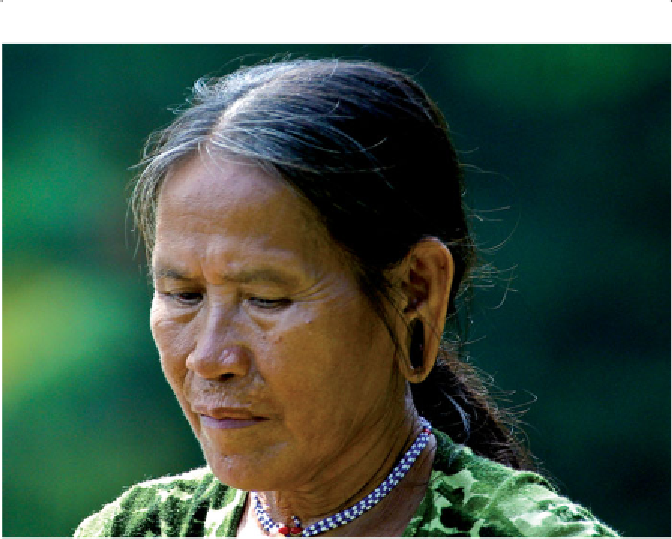Travel Reference
In-Depth Information
Figure 115
Kayan woman from the Mulu River area of central Borneo.
Migration are still being collected from Bornean tribespeople. But they are
likely to be as deeply rooted as the Orang Asli—we will see in the next chap-
ter that the area around Niah Cave near the coast in Sarawak was settled at
least 40,000 years ago.
I have visited the Kayan of central Borneo, known as the “long earlobe”
people, who live on the banks of the Mulu and other rivers of the interior.
And I spent a delightful night as a guest in a longhouse of the Rungus people
of northern Sabah, near the northernmost tip of Borneo. The Rungus pre-
serve some of the oldest traditions in Sabah, but they are clearly Malaysian in
appearance. It is obvious that any genetic and cultural connections between
them and the early migrants from Africa are tenuous at best, diluted by gen-
erations of intermarriage and the adoption of new customs.
In the Mulu River area of central Sarawak the results of intensive hunting
are clear. Sarawak is known as the Land of Hornbills. Alas, hornbills are few
and far between now, their populations decimated by native hunters and by


